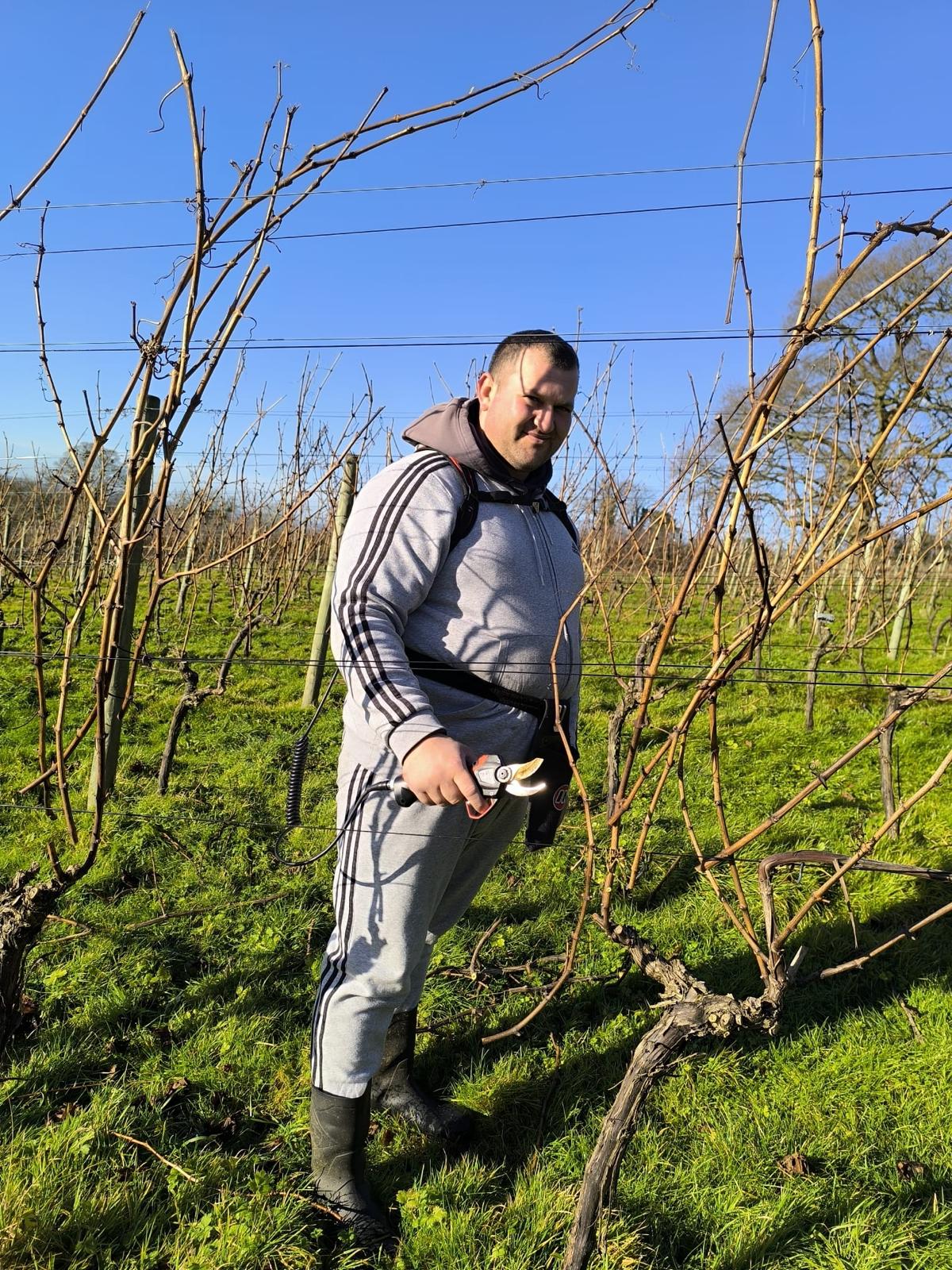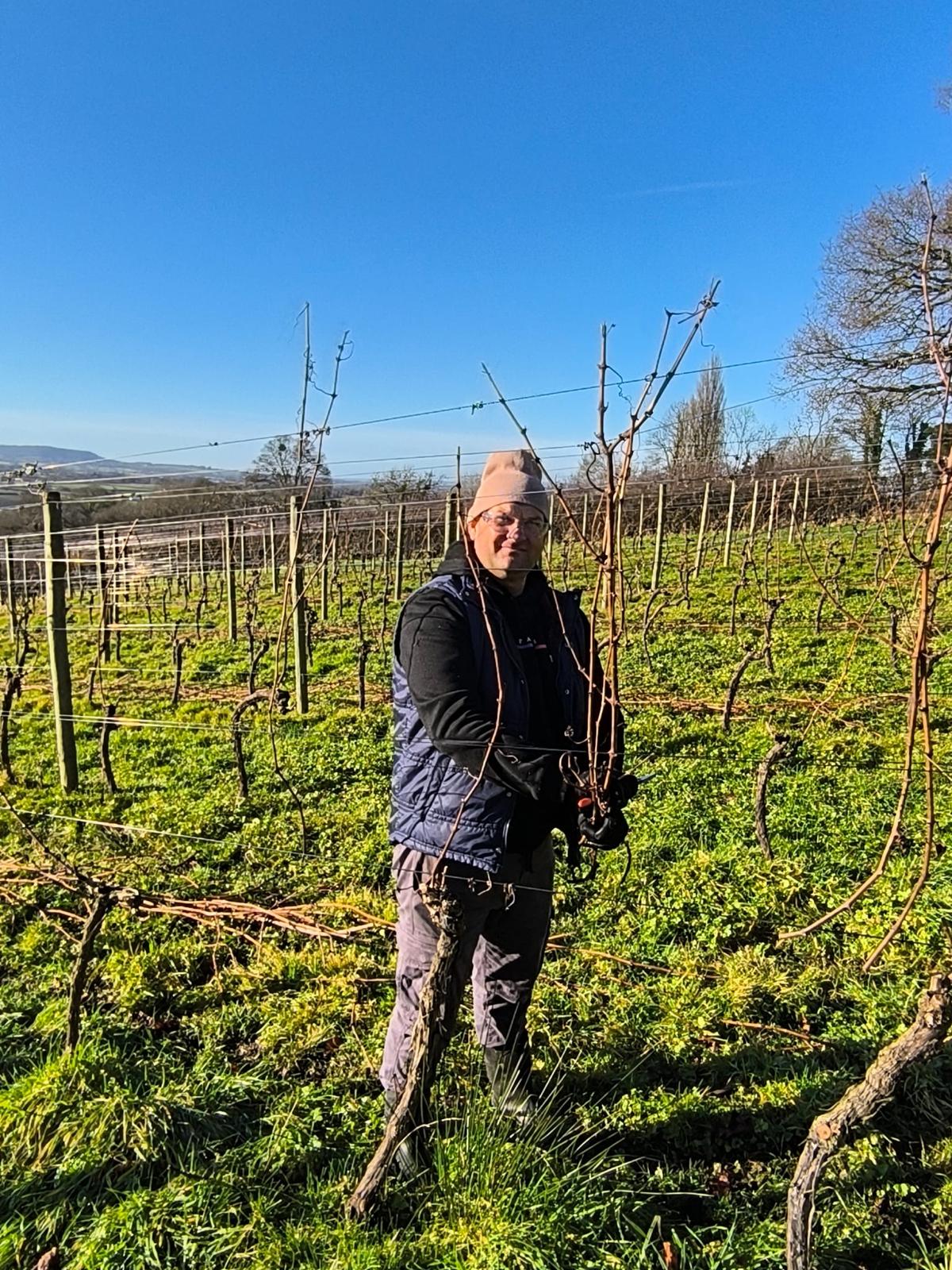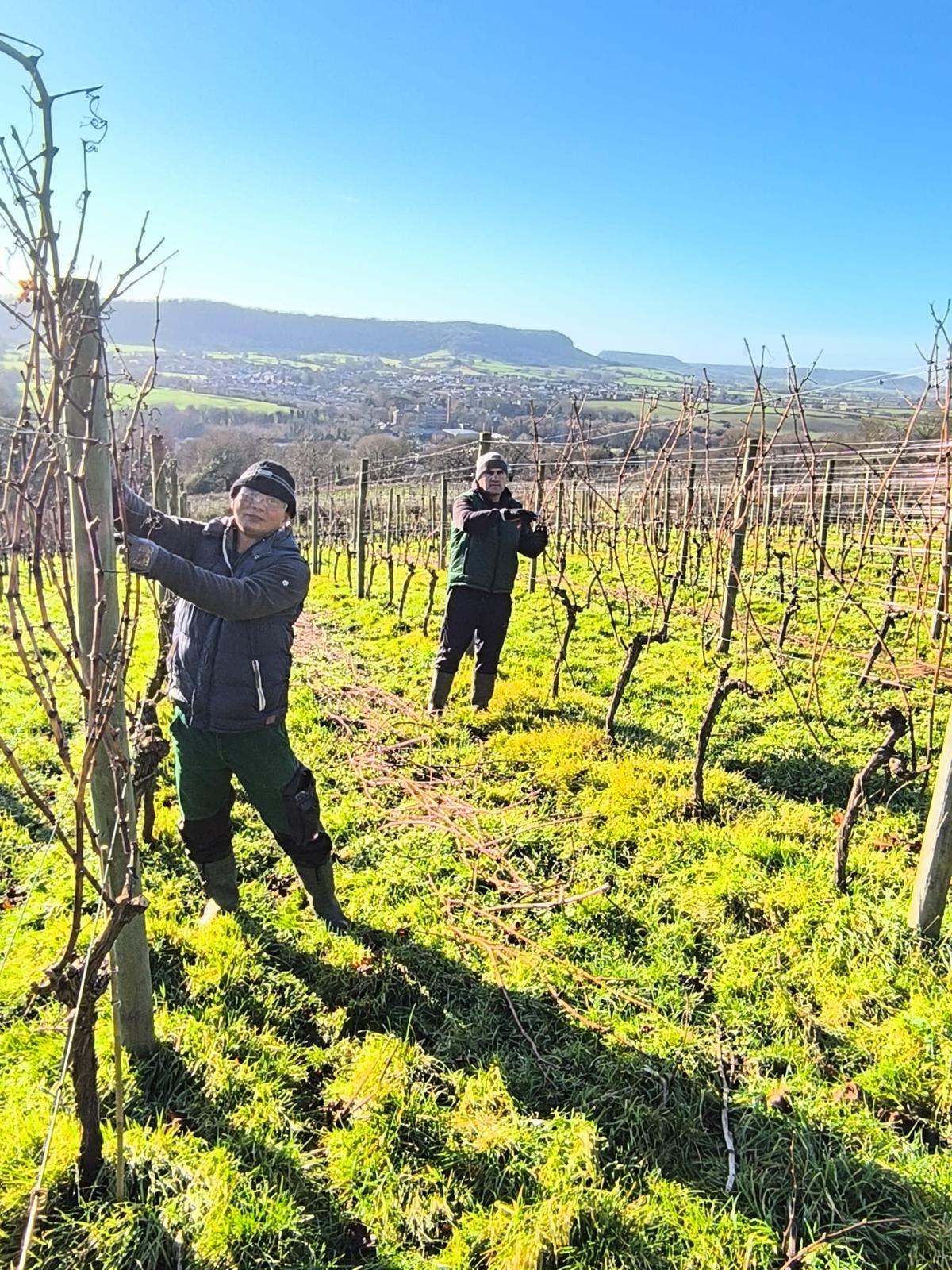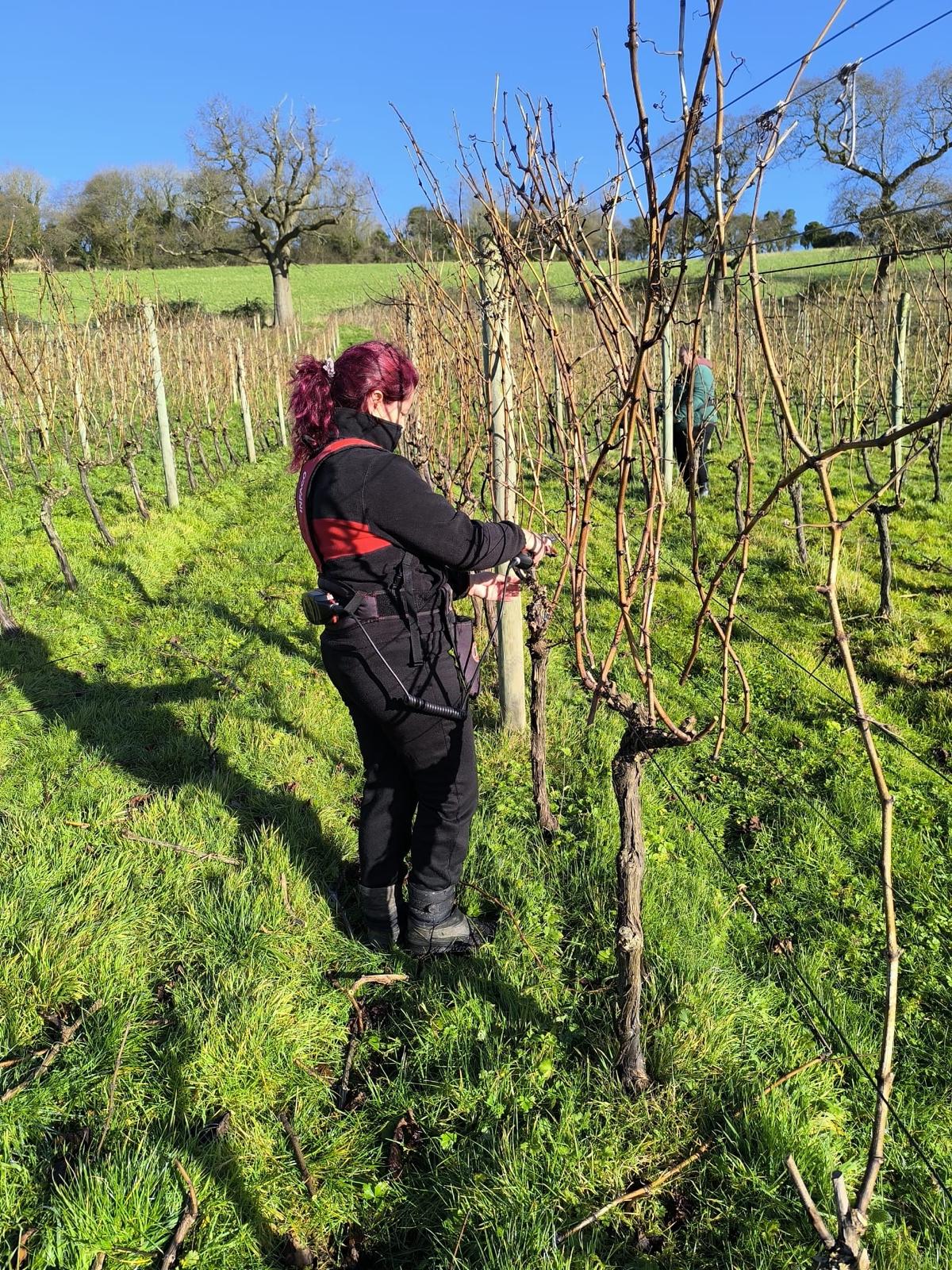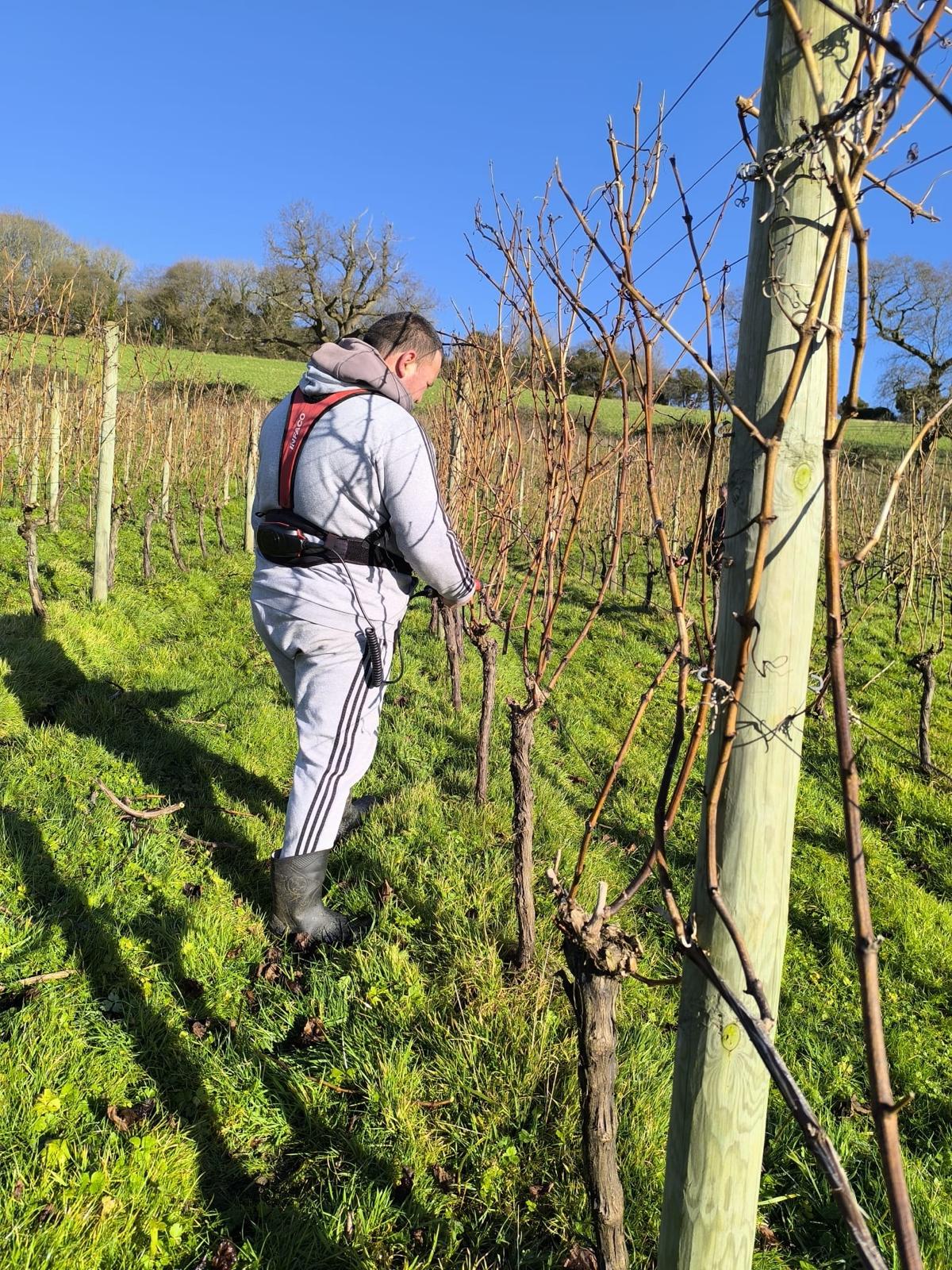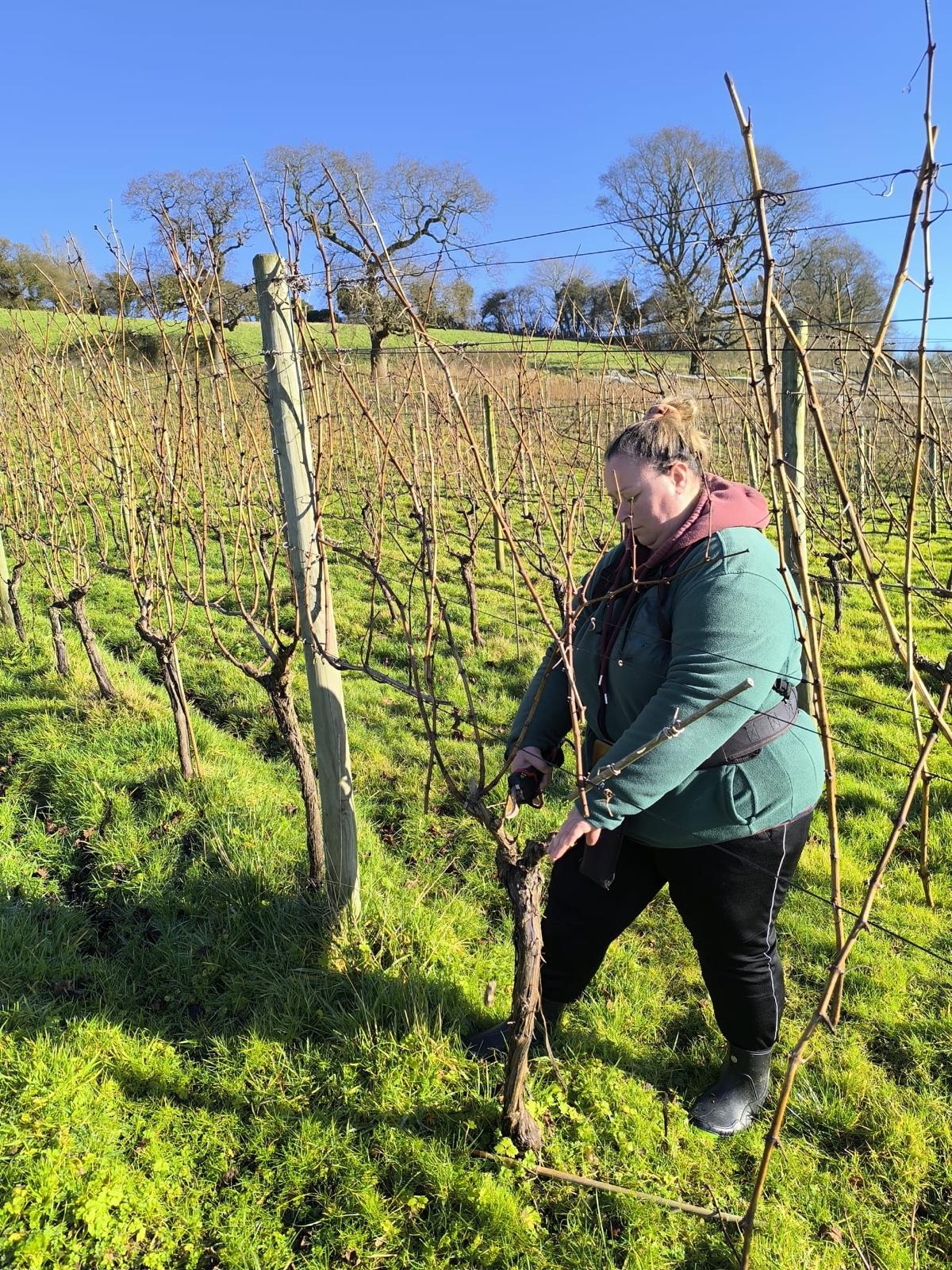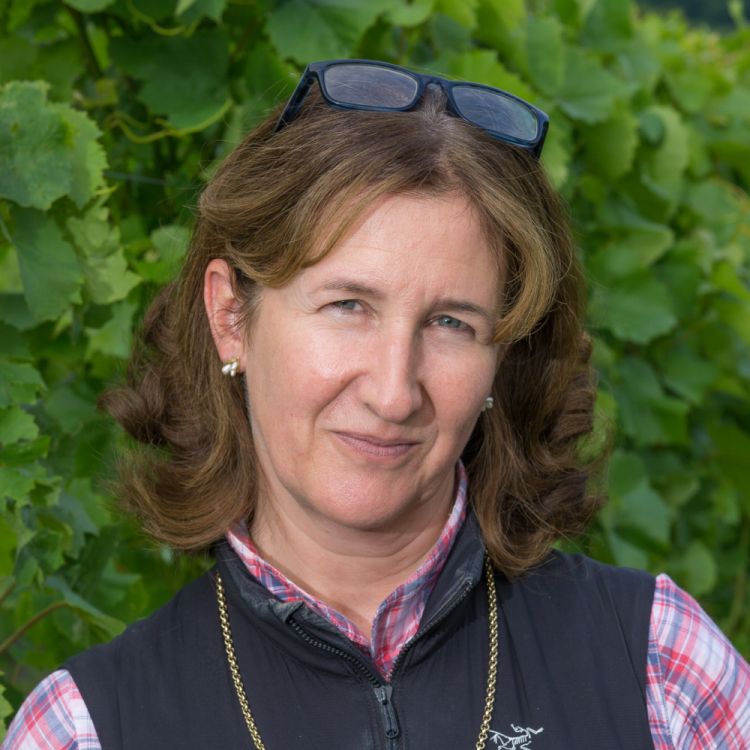Janus & Pruning
Fiona Shiner, Founder
January is named after Janus, the Roman God of beginnings and endings, often depicted as two faced looking both to the past and the future. In the vineyard, January is the start of our pruning season, and pruning is both the end of the vineyard tasks for the previous season and the beginning or preparation of the vine for the new 2025 growth cycle. A single cane from last year will be the fruit of the 2025 harvest. We start in January and will continue through until the end of March/early April.
All pruning in our vineyards is done by hand, but the team now use electric secateurs. Most of our vines are quite mature and even with the sharpest Felcos, pruning with manual secateurs would be a challenge. The first electric model we used required the operator to wear a special glove which prevented the secateurs working if they came into contact with the gloves. Excellent for hand protection but... these gloves were a bit like the chain mail you would expect a medieval knight to adorn when heading out to a Sunday joust. They were not very popular with the team. The new models are even more sophisticated and can be calibrated to your skin so that the secateurs will stop working as soon as they come into contact with the hand, much more popular with everyone and I don't have to worry about the gloves not being worn.
For those who are new to our methods, our pruning method is generally Single Guyot. We select one cane from the previous year to be our fruiting cane for the upcoming season and cut out around 90% plus of the previous seasons growth. Selecting the cane is important and skilled, to ensure it is a fruitful cane. Once this has been selected, the remaining growth from last year, which is usually well attached to the trellis foliage wires by tendrils, needs to be pulled out. A good work out. The dead wood is then thrown into the row alleys, in alternate rows, and mulched up by the flail mower, putting organic matter back into the ground. As part of our sustainability certification we are required to do earth worm counts in our vineyards and the results of these have proved that the alley's where the prunings have been mulched have higher worm counts than the alternate alleys which are bypassed. We now make sure we alternate the rows where the pruning are thrown each year. Finally we tie the fruiting cane down horizontally to the fruiting wire with a bio-degradable paper tie. This is usually an all manual process, but this year we are trialling some tying down machines.
We have 83,000 vines to prune. At an estimate of 2 minutes per vine to cut, pull out and tie down the fruiting cane to the wire, it would take one lone pruner approximately 345 eight hour days to prune our vineyards. The Forth Bridge plus some! We are fortunate to have an amazing pruning team who have been with us for quite a few years. They have improved on the 2 minutes per vine but it will still take us a good 3 months to complete the pruning, pulling out and tying down of our vines.
